Clinic
Botox®/ Xeomin®
We are proud to be a Premier Therapeutic Injection Center providing a full spectrum of on-site treatment services for patients who are diagnosed with Neurologic Disorders such as Cervical Dystonia, Chronic Migraine, Blepharospasm, Hemifacial Spasm, Spasticity (post stroke, MS related, Cerebral Palsy and Spinal Cord Injury), Masseter Dystonia, Sialorrhea or Hyperhidrosis.
Dr. Martinez and his Advance Practitioners can recommend a complete treatment plan for each patient based on their individual diagnosis, medical history, current symptoms and health plan payer policy guidelines.
Our authorization team, led by Ann Marie Wine, has extensive experience with the reimbursement process, working with specialty pharmacies to get product delivered in a timely fashion.
Allergan (www.PatientSavingsProgram.com ) and Merz (www.XeominPatientSavings.com ) Patient Access programs can help with out-of-pocket costs, as well as Patient Assistance programs dedicated to helping qualified patients receive the treatment they need. We are proud to say that she has created an efficiency model emulated across the country.
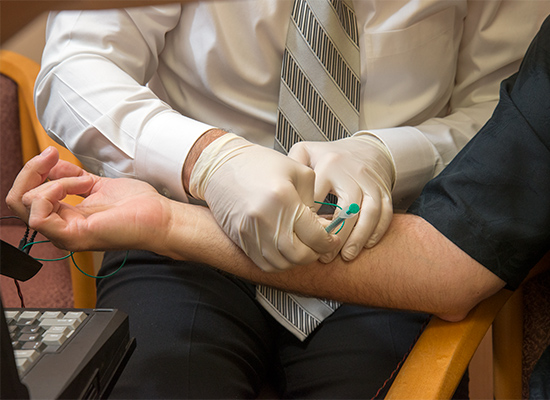
Conditions Commonly Treated with Botox® and Xeomin®
Cervical Dystonia/Spasmodic Torticollis
Dystonia is the name for a particular nerve disorder which causes muscles to contract and spasm on their own. Cervical dystonia is a condition that causes neck muscles to tighten or spasm without your control. Other terms used to describe cervical dystonia include spasmodic torticollis and torticollis.
Common signs and symptoms of Cervical Dystonia may include any combination of the following:
- Muscle spasms or tightness
- Neck pain (reported in up to 91% of cases)
- Uncomfortable pulling of muscles in the neck or shifting of the head to one side
- Decreased range of motion or rotation of the head or neck
- Symptoms that worsen during the first 5 years
- Head tremors
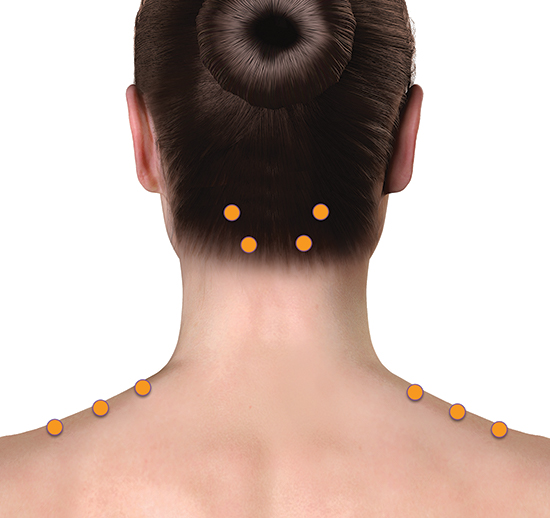
Focal Spasticity
Focal Upper/Lower Limb Spasticity can result from several conditions, including:
Stroke
A stroke can damage small parts of a person’s brain, resulting in speech and/or vision problems and movement problems such as paralysis. Focal upper/lower limb spasticity may develop weeks, or even months, after the incident. These issues usually present within a year after the stroke.
Multiple Sclerosis (MS):
In MS, the cover of the nerve cell fibers in the brain and spinal cord, called the myelin sheath, gradually wears away. As a result, patients can experience loss of movement, pain and focal upper/lower limb spasticity. MS symptoms can worsen and improve in cycles.
Adult Cerebral Palsy:
The symptoms of cerebral palsy appear in childhood and can persist in adults, affecting movement and coordination. It is not the result of damaged muscles or nerves, but rather problems in the part of the brain that controls muscle movements. As with stroke, the damaged part of the brain can also cause reduced arm/leg function associated with focal upper/lower limb spasticity.
Traumatic Brain Injury (TBI)
Focal upper/lower Limb spasticity can occur within days of the injury due to the extreme stress of a violent impact or skull fracture.
Spinal Cord Injury (SCI)
After SCI, the nerve cells controlling muscle activities below the injury become disconnected from the brain. As a result, focal upper/lower limb spasticity is common after trauma to the spinal cord.
Focal Upper/Lower Limb Spasticity can occur/present as a:
- Flexed Elbow/wrist, Clenched fist/fingers or thumb in palm
- Bent wrist
- Closed fist
- Tight arm twisting against the chest
- Stiffening or tightening of the wrist and/or thumb
- “Catching” feeling in the arm during a quick movement
- Flexed toes and ankles
- When dressing/putting on shoes or socks
- Handling objects to perform household tasks
- During hygiene
- Gait/ambulation
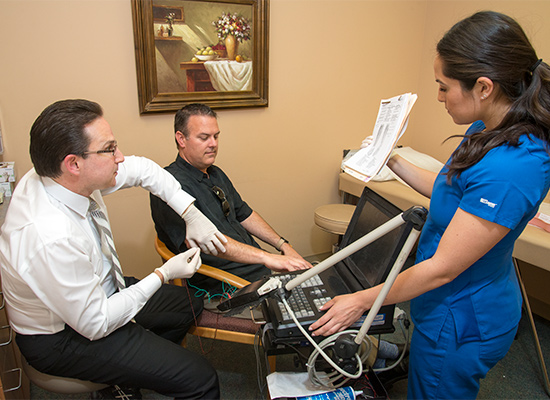
Blepharospasm
Blepharospasm is a muscle disorder that causes involuntary spasms of the muscles around your eye. These spasms can result in excessive blinking, eye twitching, or closing of your eyelids. This can impair vision and make everyday tasks such as driving or using a computer difficult.
Symptoms of Blepharospasm
- Dry eyes or watering eyes
- Light sensitivity
- Increased blinking
- Eye pain
- Soreness
- Irritation and discomfort of the eyelids
- Frequent eye movements
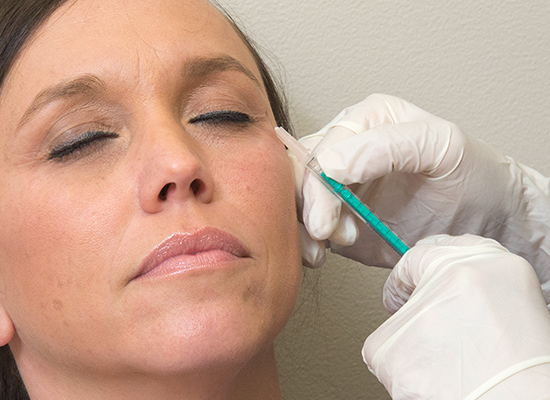
Chronic Migraine (Botox® only)
If you are suffering from Chronic Migraine, you are experiencing 15 or more headache days per month with headaches lasting 4 hours or longer. Chronic Migraine can also be associated with some of the following symptoms and triggers:
Signs & Symptoms
- Nausea and/or vomiting
- Photophobia-sensitivity to light
- Phonophobia-sensitivity to sound
- Vision changes (Aura)
- Hearing changes (Aura)
- Acute smell (Aura)
- Vertigo/dizziness
Common Triggers
- Physical activity or exertion
- Stress
- Hormonal changes
- Skipping meals
- Sleep disturbances or sleeping late
- Weather changes
- Perfume or strange odors
- Neck pain
- Lights
- Alcohol
- Smoke
- Heat
- Food/diet
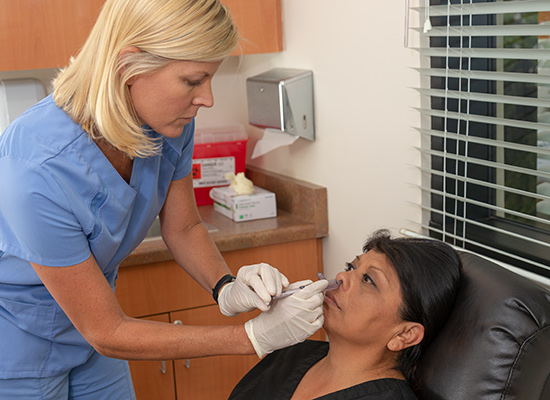
For more information please visit BOTOXMedical.com or Xeomin.com
Specialized care we offer:

Patient Journey
We are pleased to welcome you to our Botox® and Xeomin® Premier Injection program. This is designed to provide you with important information regarding your Patient Journey and Treatment Plan that you, Dr. Martinez and your Nurse Practitioner/Physician Assistant will create or have discussed during your visit. Our goal is to make sure you fully understand how this treatment may benefit your medical condition, and to help you understand how you can play an active role in your treatment decisions and ongoing care.
Patient Access to Care Timeline
- Initial Consultation-Follow up appointment
- ~Initial Injection appointment
- ~6-week Post injection follow up appointment
- ~12-week Re-injection appointment
What to expect from Botox® treatment
Once you, your Practitioner and Dr. Martinez have decided that Botox® or Xeomin® is an option for you;
Your treatment will be mapped out ahead of time by Dr. Martinez and the Botox® or Xeomin® injections are given right in our office and will consist of a number of injections into the muscles. The amount and the locations of the Botox® and Xeomin® injections will depend on your diagnosis and your individual needs. The needles used for the injection are very fine so most people experience mild to no discomfort. We do offer EMLA cream or numbing cream in office for our patients who request it.
Once you receive treatment you’ll start to experience the benefits soon, usually within a few days to a couple of weeks after receiving treatment. Depending on your condition, you may begin seeing an improvement in your symptoms within approximately 7 – 14 days after treatment, but the full effect can take as long as 6 weeks especially after the initial injection or after a change in dosing. Dr. Martinez and your Practitioner will help you determine what to expect for your condition. Because symptoms can change over time, the amount and duration of relief you feel may vary.
After receiving Botox® or Xeomin® treatment, relief may last for up to 12 weeks.
Many factors can affect the results of your Botox® or Xeomin® treatment. While a small percentage of people may develop immunity (similar to resistance) to Botox® or Xeomin®, changes to your treatment response may be caused by several other factors.
Dr. Martinez, your Practitioner and often your Health Insurance will decide how often you can be treated with Botox® or Xeomin®. You may receive repeat injections as long as:
- Your condition responds to Botox® or Xeomin® therapy
- You do not have any allergic reactions to Botox® or Xeomin® or other significant side effects
To maintain the best possible response to Botox® or Xeomin® treatment over time, Dr. Martinez and your Practitioner will give you the lowest effective dose. Also, he or she will determine the proper time between injections. Each time you return for injections, Dr. Martinez or your Practitioner may fine-tune your Botox® or Xeomin® treatment to ensure the best possible results. To help them determine how to best manage your treatment, you may wish to track your symptoms in a diary which we can provide for you if you like. There are also several great apps available for this purpose.

Insurance Verification & Prior Authorization FAQs
Prior to treating you we must first receive approval from your insurance company. We will submit the information to your insurance company that was gathered during your visit(s). As part of that process, we confirm plan coverage and benefits including co-pays, co-insurance, and deductible amounts. This can take 3 to 14 days depending on your health plan. Some plans require additional information from the physician and may require separate approvals for the injection procedure and the drug.
Depending on the requirements of your insurance company, we will need to obtain approval for ongoing treatment at certain intervals (every 6–12 months). In order to assist with this, it will be important for you to provide information about the treatment effectiveness to the provider at each appointment. This may include regular completion of a symptom diary.
Prior to your first treatment, we will make every effort to let you know the amount you may be responsible to pay. Payment options include: co-pays/deductibles, and any outstanding balances.
For commercial insurance plans, assistance may be available to help you with your co-pay/deductible amounts. We can provide you with information about the Botox® Savings Card and Xeomin® Patient Saving Program and help you register for these programs.
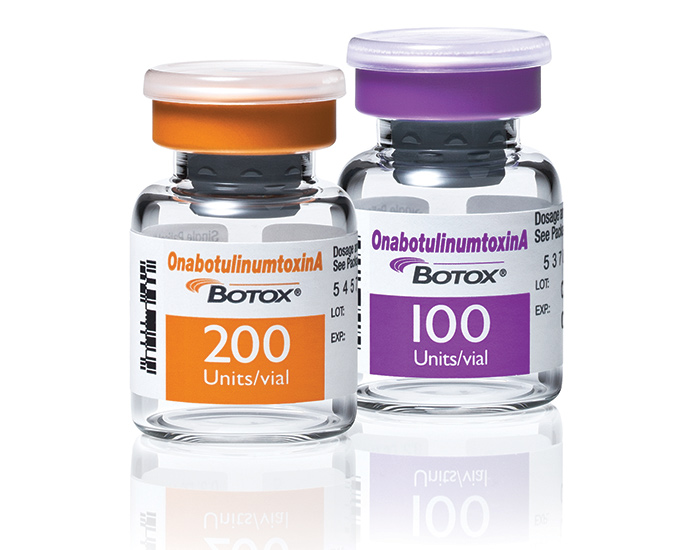
Navigating Specialty Pharmacies
Specialty Pharmacies are independent pharmacy companies that contract with insurance companies to provide specialty pharmaceuticals (like your mail order medications) for patients. These include: injectable drugs, high cost therapies and therapies with complex care… like Botox® and Xeomin®. If you have a separate or carve out prescription drug card from your medical insurance card please let us know.
When our authorization team completes your Insurance Verification they will confirm if your Insurance Plan has a designated or contracted Specialty Pharmacy. They will also submit the approved prior authorization for your Botox® or Xeomin®, the prescription and demographic information needed to get the process started.
The Specialty Pharmacy will be contacting you by phone to confirm the details about your upcoming treatment, collect any co-payment amount prior to shipping and to release the shipment of your Botox® and Xeomin®.
You may pro-actively contact them and get enrolled prior to your initial injection.
Be Aware that you must confirm to ship the Botox® and Xeomin® directly to Dr. Martinez’s office where it will be maintained under temperature control until your injection appointment.
If Your Botox® / Xeomin® is not delivered prior to your appointment, we will need to reschedule your injection until it is received.
If your insurance company doesn’t have a contracted Specialty Pharmacy or Specialty Pharmacy option we will bill your insurance company directly for your Botox® or Xeomin®. We call this the “Buy & Bill” option when we utilize office stock for an in-office injection.
What should I do if my insurance changes? Call our Authorization Team immediately and inform them of the changes. If possible email or fax over a new copy of the card and we will run a new Insurance Verification for you and get you your new cost break down including sending the information to the new Specialty Pharmacy.
Key Neurology Clinic Staff
-
-
-
-
-
-
-
-
 Salina Gomez, M.A. Medical Assistant / Authorization Coordinator
Salina Gomez, M.A. Medical Assistant / Authorization Coordinator



